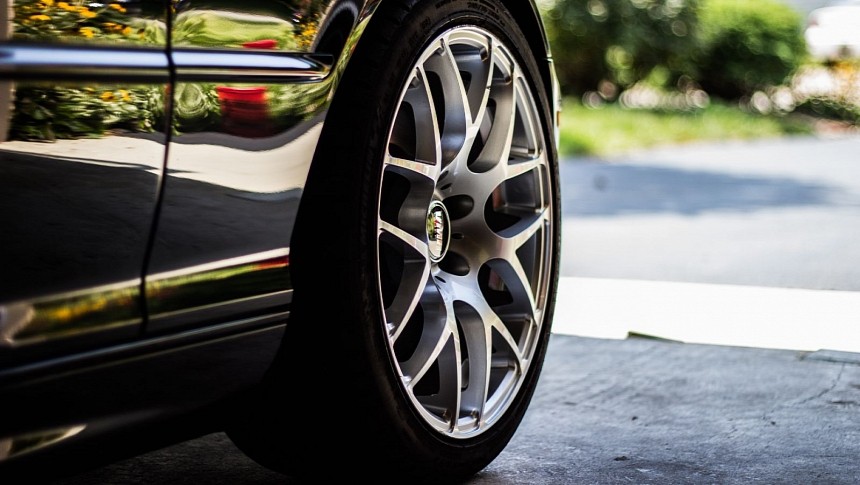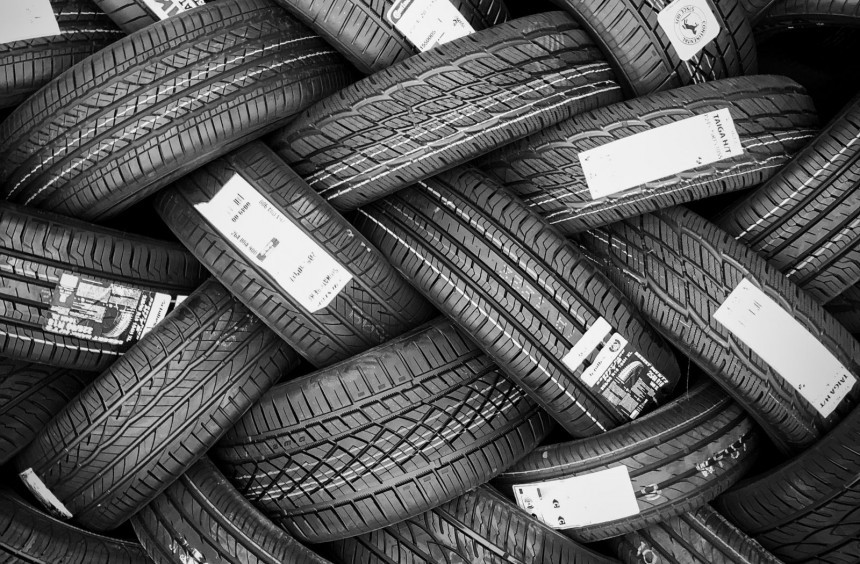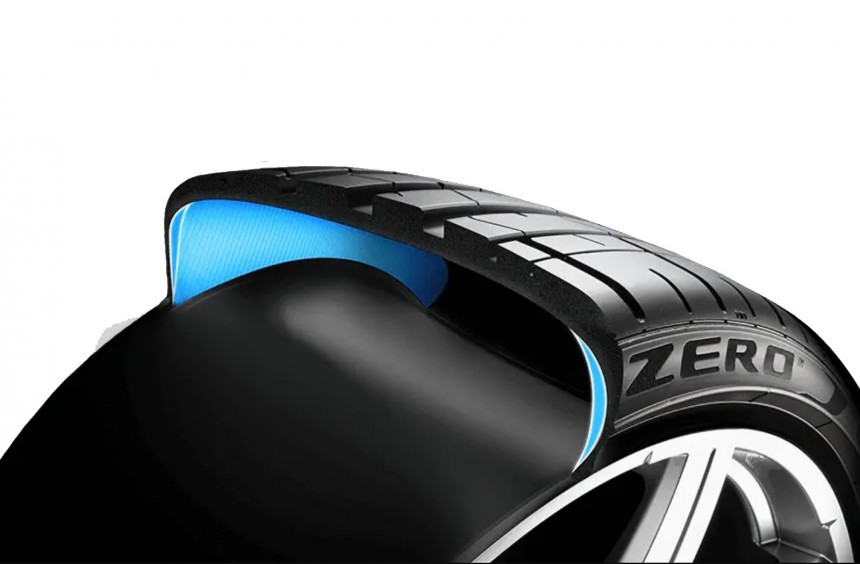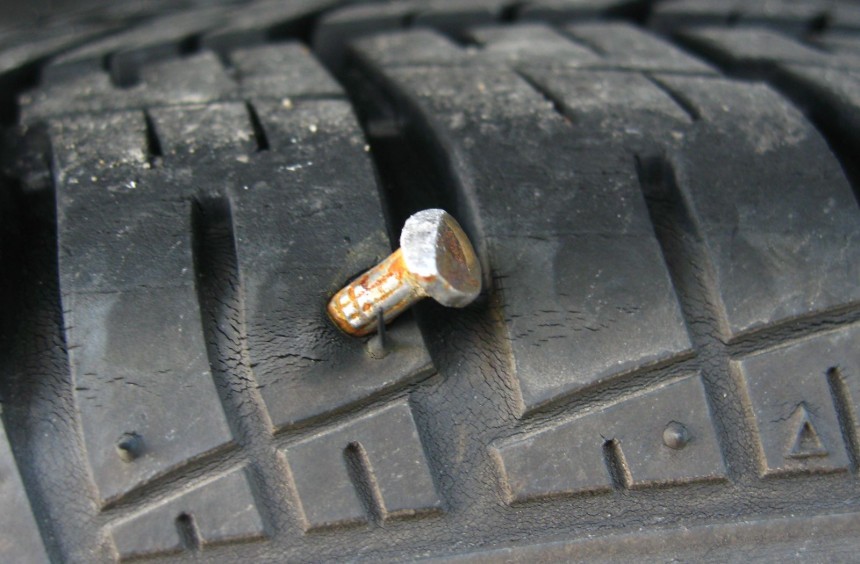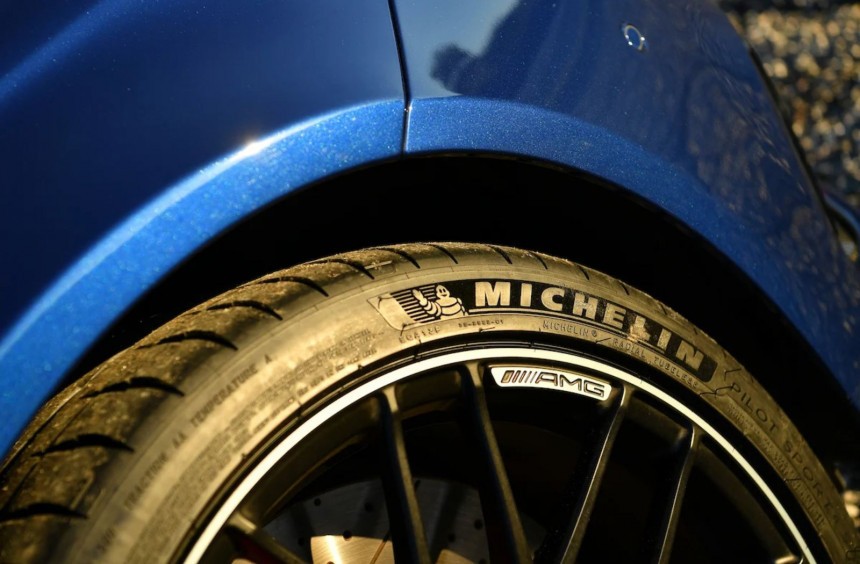If you prioritize ride comfort, want to save money, and know how to replace a tire, then ditching run flats for regular tires is a no-brainer.
Contrary to popular belief, run flat tires (RFT) were first developed by Michelin during the 1930s, but they would go on to be offered as standard on our everyday cars nearly seven decades later.
Conceived to allow the vehicle to continue driving after a puncture, run flats are currently available in three different versions: auxiliary-supported, self-sealing, and self-supporting. The self-supporting run flats are the most common of these three versions, allowing drivers to continue their journey thanks to reinforced sidewalls that can support the vehicle’s weight.
A few months ago, I brought a used car that came with worn-out run flats, and since most of the money I saved went into replacement parts, I could only afford a set of entry-level run flats. But, rather than going down that route, I spent time researching and eventually chose a set of regular, premium-quality tires. While studying both pros and cons, I discovered that many enthusiasts encouraged people to ditch run flats, and here are five reasons you should consider doing it too.
The price is the main reason I and many other car owners chose to ditch run flats. Because of their reinforced construction, they’re sensibly more expensive than regular tires, with some RFTs costing twice as much as their conventional counterparts.
There are cheaper alternatives available from entry-level companies, but if you do your homework, you’ll realize that the reviews for these tires are not that positive. Yes, run flats are safer in the event of a puncture, but if you constantly check the tire pressure and pay attention to the road, getting a flat tire is highly unlikely.
So, if you’re strapped for cash and need to replace your tires, a set of high-quality, non-RFTs will be cheaper and safer for everyday use than a set of entry-lever RFTs, in both dry and dry and wet road conditions. The drawback is that you will need a jack, a spare tire, or a puncture kit if your vehicle isn’t equipped with either.
Because of the thicker sidewalls, RFTs are stiffer and heavier. This means that, in almost all cases, an RFT will be noisier than a regular tire.
But let’s be honest; noise levels should be the last thing on anyone’s mind when choosing a set of tires. If things start getting annoying on the highway, you can turn up your media player's volume at higher speeds and forget all about it.
However, due to their stiff construction, RFTs also contribute to a harsher ride and will affect the way the car handles. While this won’t be obvious in a high-end model when driving on perfect roads, on pothole-ridden streets, or inside a sportier car that you drive like it should be driven, you’ll feel even the slightest imperfections.
If you switch to regular tires, you’ll immediately notice that the car rides more comfortably and grips the road better, particularly when cornering at higher speeds.
During my research, I discovered that many people think that once you get a puncture in an RFT, you can comfortably continue your journey without worrying about the tire.
However, this is far from the truth as RFTs are generally conceived to sustain the vehicle’s weight in case of a puncture at speeds that don’t exceed 50 mph (80 kph). Moreover, manufacturers recommend that you don’t drive on a punctured RFT for more than 50 miles (80 km) because the sidewall will begin to fail.
Therefore, if you think using run flats means you never have to worry about a puncture, think again. As I said before, these tires are still far from perfect, which is another reason you should consider switching to regular tires. After all, if you do get a flat, changing a tire is not rocket science.
As I mentioned above, if you’re using run flats and you do get a puncture that results in total pressure loss, you’ll have to find a tire shop that’s no more than 50 mph (80 kph) away.
If you’re lucky enough to find one, the puncture can usually be fixed, and you can continue your trip. Still, the tire’s sidewalls won’t have the same rigidity as they did before the puncture, so it won’t be able to sustain the vehicle’s weight if another puncture occurs, and its lack of rigidity is likely to affect handling.
Thus, RFT manufacturers and tire technicians recommend replacing the punctured tire with a new one. You won’t have this problem with a regular tire unless the puncture is huge or it occurs on one of the sidewalls.
The inherited rigidity of an RFT doesn’t just affect ride comfort, but it can also damage your wheels much quicker than regular tires. Because the sidewalls are much stiffer and the overall weight of the tire is greater, more pressure will be put on the wheels, mainly when hitting a pothole or a high curb.
If you happen to have large-diameter, non-forged wheels with low-profile tires, it’s far more likely to get those nagging cracks on your beloved rims. Discovered in time, these cracks can be welded, but if you don’t notice them, they can cause severe damage to the wheel, which will need replacing.
You can have the same problem with regular tires if you’re not being careful, but it’s far less likely because the flexible sidewalls absorb the impact better.
So there you have it. These are the five main reasons you should ditch run flats in favor of regular tires. After buying my car with RFTs and switching to regulars, I noticed a huge improvement in terms of comfort and maneuverability. Then again, my car is equipped with sports suspension and 18-inch wheels that can only accommodate low-profile tires. If you have a comfortable SUV with smaller-diameter wheels, the difference might not be that obvious, but the switch is still worth it as you can save a decent amount of money.
Conceived to allow the vehicle to continue driving after a puncture, run flats are currently available in three different versions: auxiliary-supported, self-sealing, and self-supporting. The self-supporting run flats are the most common of these three versions, allowing drivers to continue their journey thanks to reinforced sidewalls that can support the vehicle’s weight.
A few months ago, I brought a used car that came with worn-out run flats, and since most of the money I saved went into replacement parts, I could only afford a set of entry-level run flats. But, rather than going down that route, I spent time researching and eventually chose a set of regular, premium-quality tires. While studying both pros and cons, I discovered that many enthusiasts encouraged people to ditch run flats, and here are five reasons you should consider doing it too.
Run flats are far more expensive than regular tires
There are cheaper alternatives available from entry-level companies, but if you do your homework, you’ll realize that the reviews for these tires are not that positive. Yes, run flats are safer in the event of a puncture, but if you constantly check the tire pressure and pay attention to the road, getting a flat tire is highly unlikely.
So, if you’re strapped for cash and need to replace your tires, a set of high-quality, non-RFTs will be cheaper and safer for everyday use than a set of entry-lever RFTs, in both dry and dry and wet road conditions. The drawback is that you will need a jack, a spare tire, or a puncture kit if your vehicle isn’t equipped with either.
Run flats are noisier and affect the vehicle’s handling
But let’s be honest; noise levels should be the last thing on anyone’s mind when choosing a set of tires. If things start getting annoying on the highway, you can turn up your media player's volume at higher speeds and forget all about it.
However, due to their stiff construction, RFTs also contribute to a harsher ride and will affect the way the car handles. While this won’t be obvious in a high-end model when driving on perfect roads, on pothole-ridden streets, or inside a sportier car that you drive like it should be driven, you’ll feel even the slightest imperfections.
If you switch to regular tires, you’ll immediately notice that the car rides more comfortably and grips the road better, particularly when cornering at higher speeds.
Punctured RFTs can only be used at low speeds for a limited number of miles
However, this is far from the truth as RFTs are generally conceived to sustain the vehicle’s weight in case of a puncture at speeds that don’t exceed 50 mph (80 kph). Moreover, manufacturers recommend that you don’t drive on a punctured RFT for more than 50 miles (80 km) because the sidewall will begin to fail.
Therefore, if you think using run flats means you never have to worry about a puncture, think again. As I said before, these tires are still far from perfect, which is another reason you should consider switching to regular tires. After all, if you do get a flat, changing a tire is not rocket science.
Run flats can rarely be reused after a puncture
If you’re lucky enough to find one, the puncture can usually be fixed, and you can continue your trip. Still, the tire’s sidewalls won’t have the same rigidity as they did before the puncture, so it won’t be able to sustain the vehicle’s weight if another puncture occurs, and its lack of rigidity is likely to affect handling.
Thus, RFT manufacturers and tire technicians recommend replacing the punctured tire with a new one. You won’t have this problem with a regular tire unless the puncture is huge or it occurs on one of the sidewalls.
The wheels are more prone to cracking with run flats
If you happen to have large-diameter, non-forged wheels with low-profile tires, it’s far more likely to get those nagging cracks on your beloved rims. Discovered in time, these cracks can be welded, but if you don’t notice them, they can cause severe damage to the wheel, which will need replacing.
You can have the same problem with regular tires if you’re not being careful, but it’s far less likely because the flexible sidewalls absorb the impact better.
So there you have it. These are the five main reasons you should ditch run flats in favor of regular tires. After buying my car with RFTs and switching to regulars, I noticed a huge improvement in terms of comfort and maneuverability. Then again, my car is equipped with sports suspension and 18-inch wheels that can only accommodate low-profile tires. If you have a comfortable SUV with smaller-diameter wheels, the difference might not be that obvious, but the switch is still worth it as you can save a decent amount of money.
